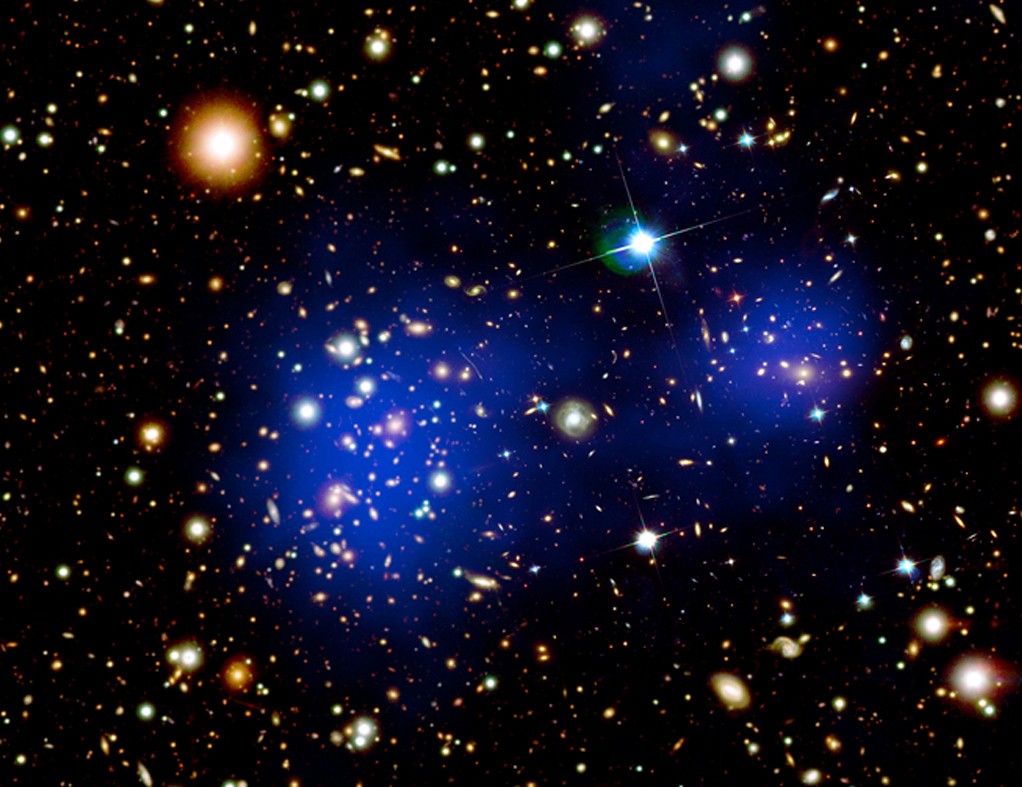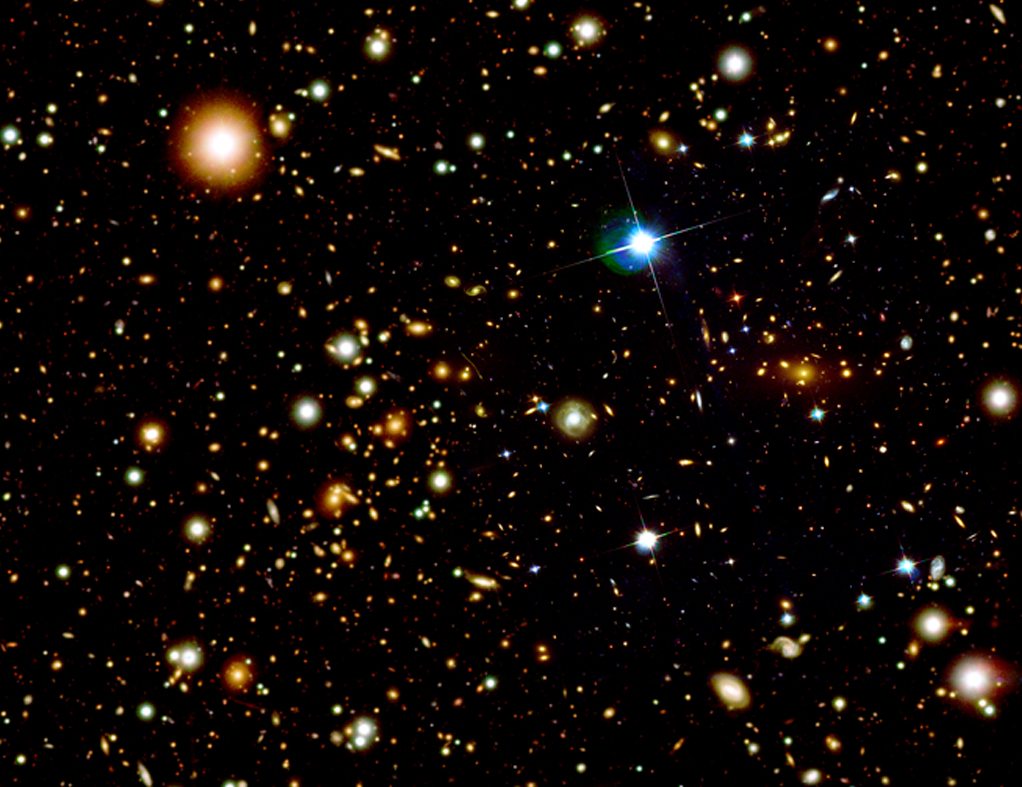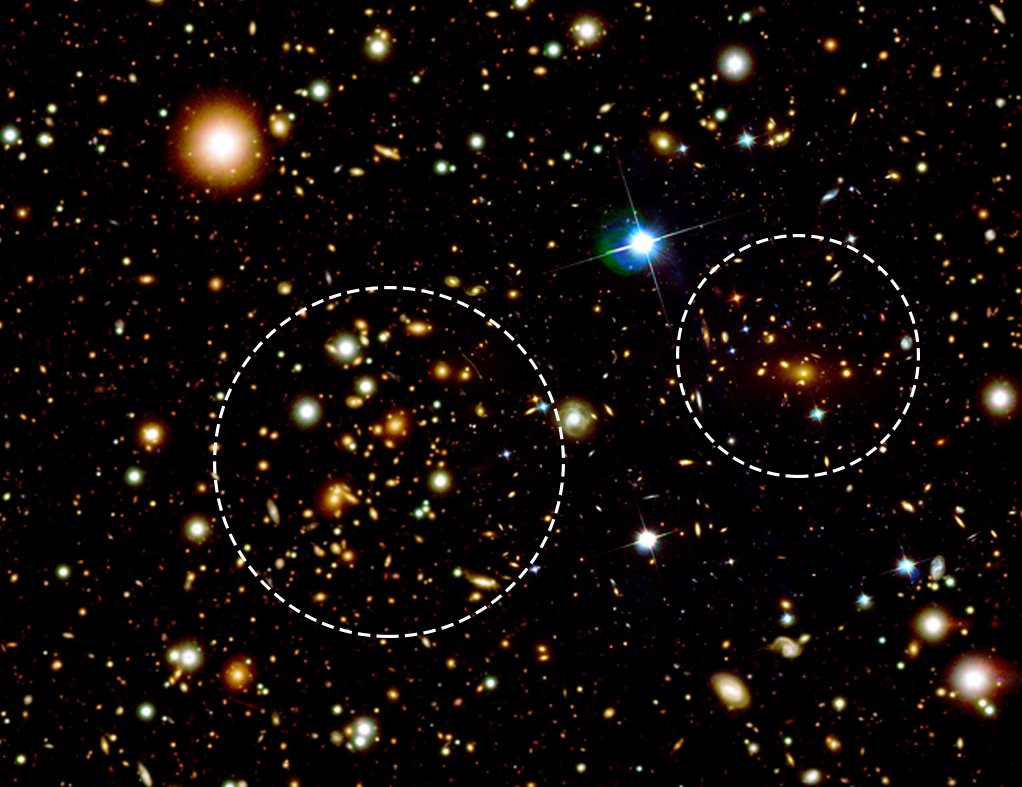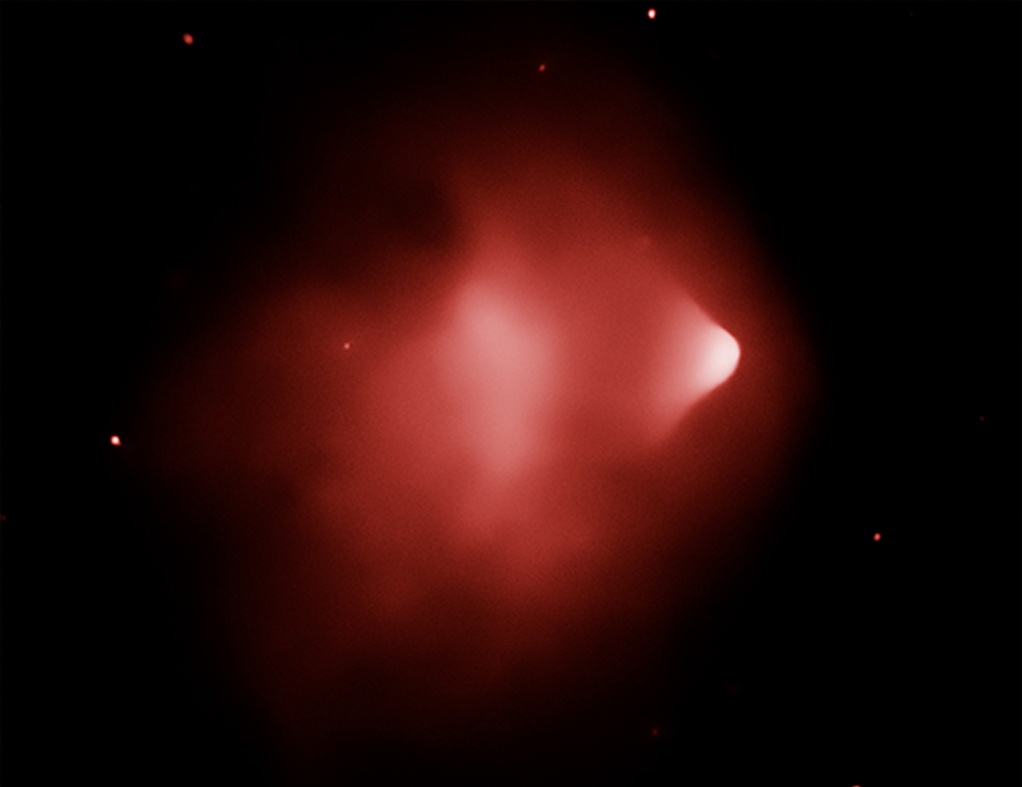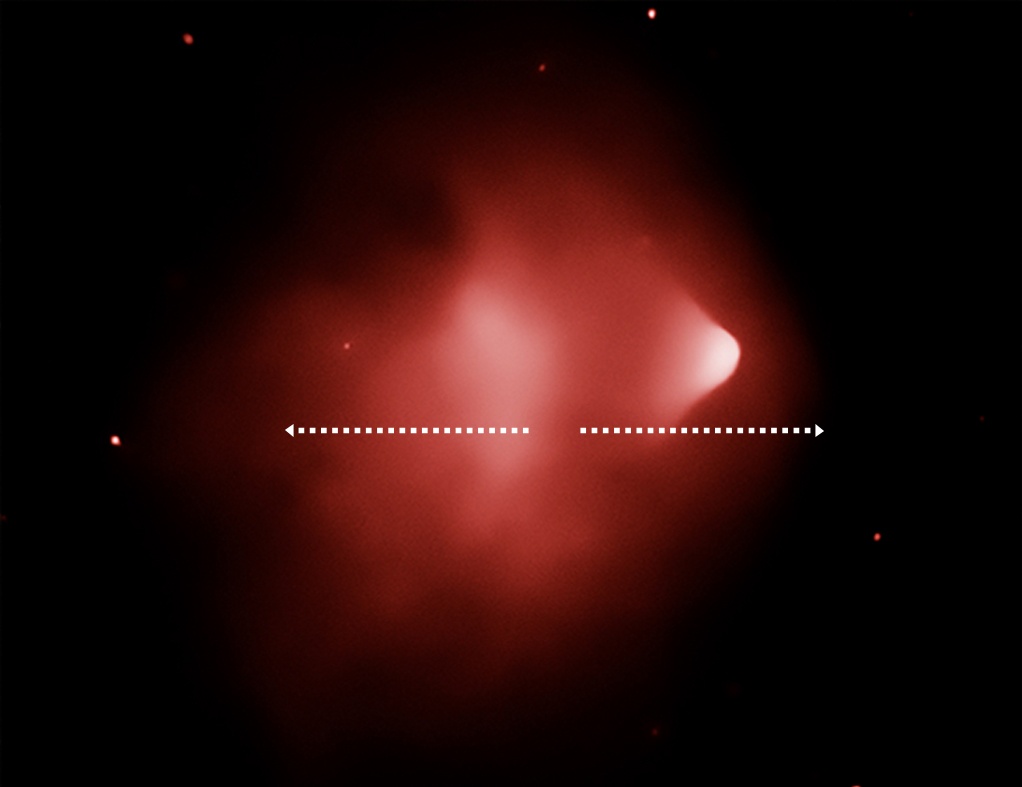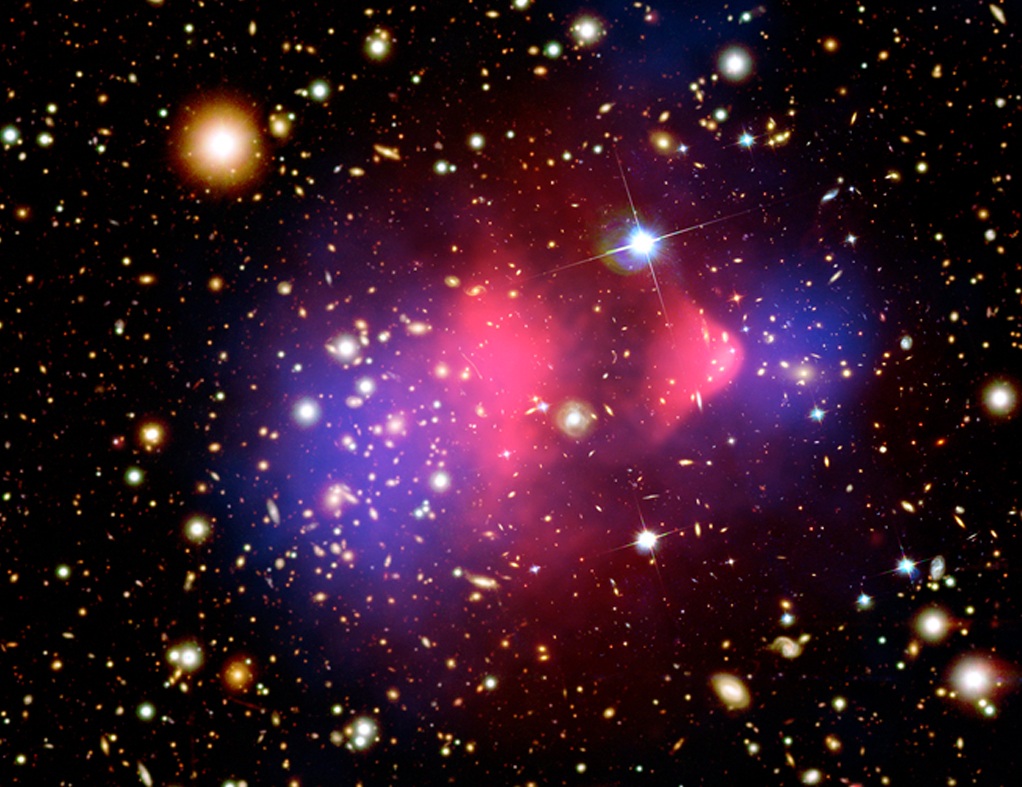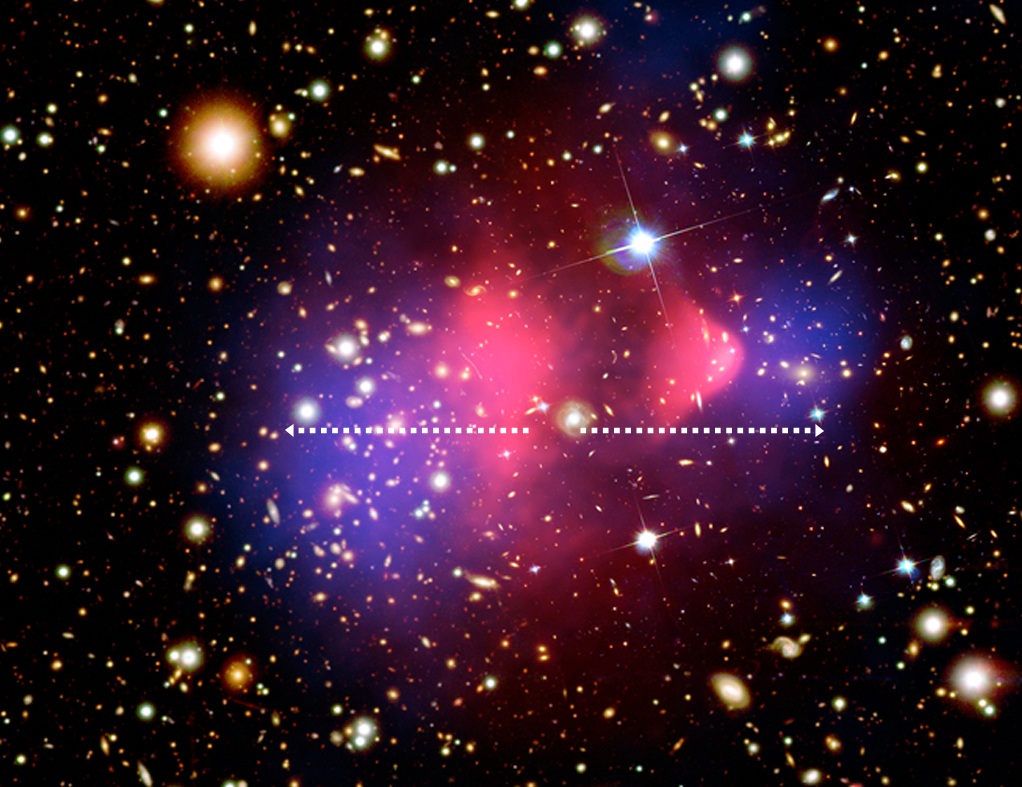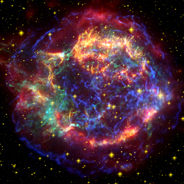Interactive Overview
Slider Interactive: A series of images showing two clusters of galaxies known as the Bullet Cluster in different wavelengths of light. Below the caption is a horizontal slider bar with four labeled stops and a solid white circle. Dragging the white circle right and left along the slider bar causes the image, labels, and caption to change. The change occurs gradually as one image, along with its associated captions and labels, fades out and the next fades in. A toggle button to the upper right of the image turns the image labels off and on. Labels are in the form of text with arrows pointing to specific features in the image. Other labels are graphic overlays.
Slider Stops
From left to right, the slider stops are labeled: Visible + dark matter, Visible, X-ray, and Composite.
Summary of Slider Stops
Sliding left to right reveals the following:
- “Visible + dark matter” stop shows how the Bullet Cluster is seen in visible light, with a map of the mass of the galaxies and dark matter shown in blue.
- “Visible” stop shows how these galaxies are seen in visible light, with many points of light scattered across. This is the initial image shown when the interactive is loaded.
- “X-ray” stop shows the same view with a cloudy red, irregularly shaped blob in the center.
- “Composite” stop shows a composite of all the interactive’s wavelengths combined, with blue dark matter outside the cluster and red X-ray gas in the center.
Stop 1: Visible + dark matter
Image Description: Visible + dark matter
Image of a black swath of space densely filled with points of light in various sizes and shapes: small dots, thin ellipses, fuzzy halos, and spiral-shaped blobs. Some have diffraction spikes. The objects are in various colors: yellow white, white, and blue. Amid the scene, two regions have objects that are more densely grouped together: one area is in the center left and the other in the center right. The area of these clusters is highlighted, each with a bright blue glow. Both of the blue areas resemble soft circular shapes, and the one at left is larger. There is very little blue glow in the center, in the area between the clusters.
Labels: Visible + dark matter
There are two text labels. Each blue area is labeled “Map of cluster mass.”
Caption: Visible + dark matter
Based on the slightly warped shapes of galaxies, mass—mostly dark matter—in each cluster is mapped and shown in blue.
Stop 2: Visible
Image Description: Visible
This image reveals the same section of space, now seen in visible light. Some of the same aspects seen in the prior stop are present here: The area is densely filled with points of light in various sizes and shapes. Amid the scene, two regions have objects that are more densely grouped together: A larger area is in the center left, and the other in the center right.
Labels: Visible
There are two text labels and two graphic overlays. A white dashed circle highlights the galaxy cluster in the center left and is labeled “Cluster of galaxies.” A smaller white dashed circle highlights the galaxy cluster in the center right and is also labeled “Cluster of galaxies.”
Caption: Visible
In visible light, the relationship between two massive galaxy clusters is unclear.
Stop 3: X-ray
Image Description: X-ray
This image reveals the same section of space, now seen in X-ray light. A cloudy red, irregularly shaped blob is in the center of the image. Within the large red blob, there are two areas that are brighter, one in the center and one to the center right. The bright area to the center right forms a well-defined u-shaped arc pointing back toward the center. Only a few small red points of light are thinly scattered across the black background.
Labels: X-ray
There are two text labels and two graphic overlays. The large cloudy red blob is labeled “Heated, compressed gas.” Within the red blob, the white area toward the right is labeled “Cool cluster core.” Two horizontal white arrows point outward from the center of the red blob, one pointing toward the left and the other to the right.
Caption: X-ray
X-rays show that the clusters collided, with the cooler, stripped core of the smaller cluster plowing through the warmer gas.
Stop 4: Composite
Image Description: Composite
This image is a composite of the previous stops of this slider. Points of light in various sizes and shapes densely fill the space. Small dots, thin ellipses, fuzzy halos, and spiral shaped blobs are scattered across the image. Some have diffraction spikes. The objects are in various colors: yellow white, white, and blue. The two galaxy clusters that comprise the Bullet Cluster are highlighted, each with a bright red glow toward the center and a bright blue glow toward the edges.
Labels: Composite
There are two text labels and two graphic overlays. The bright blue area among the center left galaxy cluster is labeled “Dark matter location (blue).” The bright red area among the center right is labeled “Gas moving slower (red).” Two white horizontal arrows point outward from the center of the red blob to the edges of the blue blobs, one pointing toward the left and the other to the right.
Caption: Composite
Dark matter is moving ahead of the gas because it does not interact with normal matter, so it did not collide and slow down.
